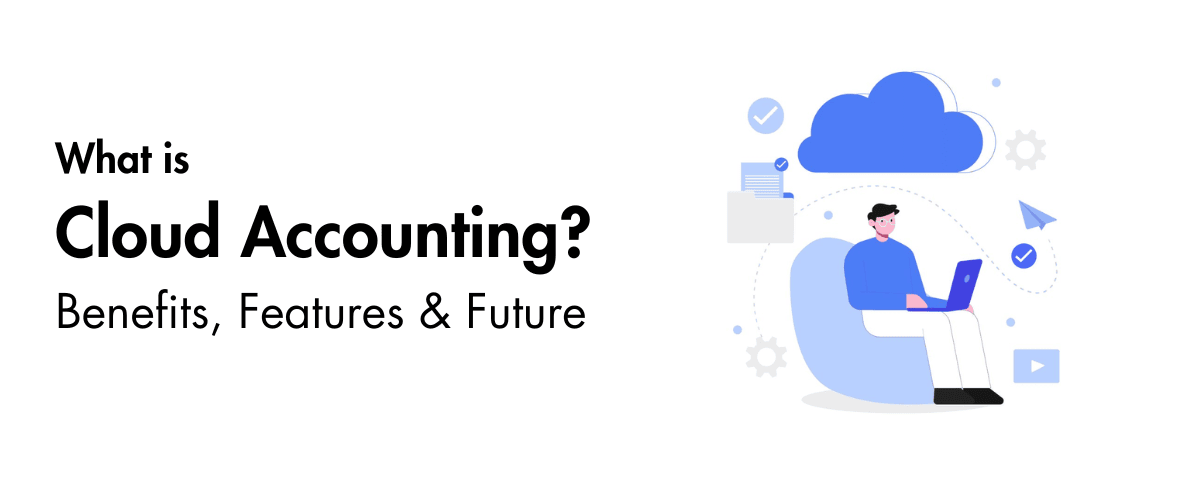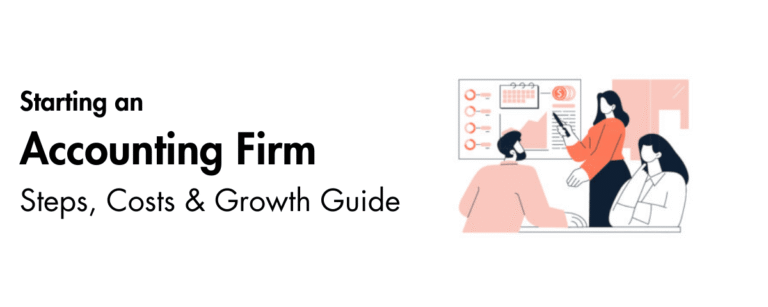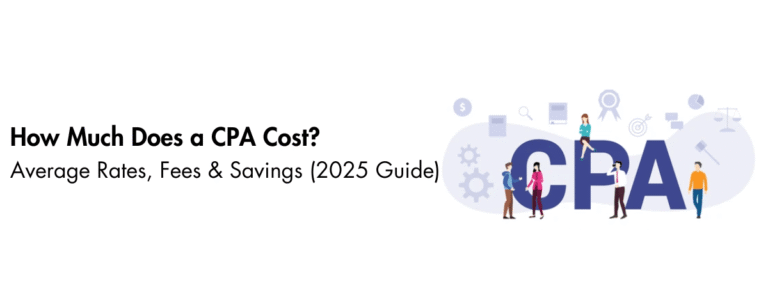Cloud accounting runs your finances online. Your data lives on secure remote servers, updates in real time, and stays consistent for everyone who has access. You get bank feeds, OCR invoice capture, and rules that post routine entries without the copy and paste grind.
APIs connect your bank, payroll, CRM, and ecommerce so your reporting pulls from a single source of truth. When you do it right, your close speeds up, your cash view sharpens, and your team has fewer late nights.
Cloud accounting is less about switching software and more about adopting a live, always on finance engine that supports how your team actually works.
Table of Contents
- Key Takeaways
- What Cloud Accounting Is and How It Works
- Cloud Accounting vs. Traditional On Premises Software
- Where Accountably Fits
- Benefits and Business Value of Cloud Accounting
- Core Features and AI Driven Automation
- One quick note
- Costs, Deployment Options, and Security Considerations
- Frequently Asked Questions
- Conclusion
Key Takeaways
- Cloud accounting is internet delivered software with data stored on secure remote servers, updated in real time for every user on one live ledger.
- You get collaboration from any device, vendor managed updates, and automatic backups that reduce IT overhead.
- Bank feeds, OCR, and AI driven rules import, classify, and reconcile transactions, which cuts manual entry and errors.
- APIs connect banks, payroll, CRM, and ecommerce to support consolidated, multi entity, and multi currency reporting.
- Compared with on premises systems, cloud accounting offers subscription pricing, scale on demand, easier integrations, and faster closes with tighter cash control.
What Cloud Accounting Is and How It Works
Cloud accounting means you log in through a browser or mobile app and work in a live general ledger that everyone on your team can see. There are no version conflicts. When a transaction posts, the ledger updates, and your dashboards reflect the change right away.
Real time data and shared access
You and your team work in the same books at the same time. Role based access controls who can view, post, approve, or export. Audit trails record every change. This gives you clean collaboration without emailing files or waiting for a “final copy.”
Bank feeds and OCR invoice capture
Secure bank connections stream transactions into your ledger, then matching rules line up entries with invoices, bills, and receipts. OCR reads vendor invoices, fills in headers and line items, and learns from your corrections. The result is faster reconciliations and fewer coding mistakes.
Integrations and APIs
APIs link your accounting system to payroll, CRM, payment processors, and ecommerce. Instead of siloed exports, data flows in both directions, which supports consolidated reporting and variance analysis. When the sales team closes a deal or a store settles a batch, finance sees it without waiting for a manual import.
Deployment and pricing
Most vendors offer multitenant SaaS, private cloud, or hybrid. SaaS is the quickest path, since the provider manages updates and backups. Pricing is subscription based, usually per user or per module, which replaces server spend with predictable operating costs.
Security basics
Look for multi factor authentication, encryption in transit and at rest, SOC 2 or ISO 27001 audits, and clear uptime SLAs. Ask about data residency, geo redundancy, and recovery targets such as RTO and RPO. Strong controls in the software do not replace internal discipline, so plan approvals, segregation of duties, and access reviews.
Cloud Accounting vs. Traditional On Premises Software
The choice between cloud and on premises drives cost, speed, and control. Cloud tools deliver updates in the background and reduce IT workload. On premises systems require servers, patches, and more hands to keep things running. Collaboration also differs. Cloud users work on one live ledger. On premises teams often pass files around or depend on VPN access, which slows everything down and introduces risk.
If your team measures time to close in days, cloud helps you shave them. If you measure in hours, cloud helps you protect them.
Below, we break down the tradeoffs in detail, then map them to business value you can actually feel, for example, a faster cash position each morning and a cleaner month end checklist.
Where Accountably Fits
Accountably provides expert offshore staffing and back office solutions for CPA firms, EAs, and accounting teams.
If you run a cloud stack and need consistent help with AP, AR, reconciliations, or month end workpapers, our teams plug into your processes and keep the books moving while you focus on clients and reviews.
Benefits and Business Value of Cloud Accounting
You are not buying software, you are buying time. The biggest win with cloud accounting is control over time. Close time, approval time, and the time it takes to answer a cash question from a partner or a client.
Faster close and a cleaner cash view
With real time ledgers, bank feeds, and smart rules, you move from waiting on imports to reviewing exceptions. That shortens reconciliations and brings the cash position into focus each morning. When everyone can see the same live numbers, your month end checklist feels lighter and your review notes get more precise.
Collaboration without bottlenecks
Cloud tools let staff, managers, and outside advisors work in one set of books with role based access. Approvals, comments, and attachments live next to the transactions, so context never gets lost in email. You reduce version sprawl, you keep the pace, and you preserve a full audit trail for later.
Cost structure that scales
Subscription pricing replaces server purchases and patch cycles with a predictable operating cost. You scale users up during busy season, then right size after. Vendors handle updates and backups, which frees your team to focus on controls and analysis instead of maintenance.
Better controls and audit readiness
Modern platforms include detailed logs, document links, and consistent workflows. Segregation of duties is easier to enforce. You can prove who posted, who approved, and when it happened. That makes internal audits smoother and external audits less stressful.
The practical test is simple. When a client or partner asks for a number, can you answer with confidence in minutes, not hours, without chasing spreadsheets?
At a glance, how cloud differs from on‑premises
| Area | Cloud Accounting | Traditional On‑Premises |
| Access | Browser and mobile, real time | VPN or local network, periodic sync |
| Updates | Automatic, vendor managed | Manual patches, IT time required |
| Backups | Built in, geo redundant | Local or offsite, you manage it |
| Collaboration | One live ledger, role based | File copies, lockouts, version risk |
| Integrations | APIs, app marketplaces | Custom connectors, slower to change |
| Cost model | Subscription, per user or module | Licenses, servers, and support costs |
Core Features and AI Driven Automation
Cloud accounting gives you a finance engine you can actually steer. Features work together, so the more you turn on, the more time you win back.
A real time ledger for single and multi entity
You post to one live GL that supports classes, locations, and multiple entities with intercompany rules. Dashboards pull from the same source, so cash, AR aging, AP due, and margin trends always reflect the latest activity.
Bank feeds with rules that do the heavy lifting
Secure bank connections stream transactions straight into the books. You build rules that match payees, accounts, and classes, then fine tune them over time. The team shifts from typing to reviewing, which improves accuracy and morale in the same week.
OCR invoice capture and AP automation
OCR invoice capture reads vendor bills from email or upload, then fills headers, dates, and line items. You route for approval, schedule payments, and attach documents to the final entry. This reduces keying errors, raises on time payment rates, and keeps vendor relationships steady.
AI assistants for close and commentary
New AI copilots help answer ledger questions, draft variance notes, and outline month end tasks. Think of it as a junior analyst who never gets tired. You still approve and control, but the first draft is ready faster, which helps reviewers stay focused on the few items that matter.
Predictive cash flow and early alerts
With enough history, your system can project cash inflows and outflows and flag pressure points before they sting. You can set alerts for overdue AR, unusual spend by vendor, or sudden dips in gross margin. Early signals help you plan decisions about credit, collections, and spend holds.
Analytics and anomaly detection
Modern analytics scan large volumes of entries and point out outliers. A duplicate payment, a vendor rate jump, or a strange posting pattern stands out quickly. Instead of hunting across spreadsheets, you start from a focused list and resolve exceptions with receipts and comments right in the record.
How this plays out in the real world
A four partner CPA firm we spoke with moved five dental practices to a cloud stack. The partners kept client reviews, while a small ops team handled AP, AR, and reconciliations inside the same system. Bank rules and OCR took care of routine entries, and partners spent their time on planning and tax. The change did not happen overnight, but the payoff felt real by the second month end close.
One quick note
If you already run a cloud stack and your bottleneck is people, our teams support AP, AR, reconciliations, and month end workpapers for CPA firms, EAs, and in house accounting leaders. We plug into your tools and follow your controls, so you keep the client relationship and the final sign off. Then we get back out of the way while your team takes the credit.
Costs, Deployment Options, and Security Considerations
Cloud succeeds when you plan for cost, deployment, and controls with the same care you bring to the chart of accounts. Here is a practical blueprint.
Pricing model, what to expect
Budget the base subscription, user seats, and advanced modules like multi entity, revenue recognition, inventory, or payroll. Add costs for bank feed connections, OCR invoice capture, payment processing, and any analytics add ons. Plan for implementation, migration, and training. Keep a small cushion for integration work and change requests in the first quarter.
Deployment choices
- Multitenant SaaS, fastest to adopt, lowest maintenance, strong vendor cadence.
- Private cloud, more isolation, useful for specific compliance or data residency needs.
- Hybrid, keep a legacy app on premises, use cloud for the GL and subledgers, retire old pieces over time.
If you are a CPA or EA who supports many clients, start with the platform that best fits your largest client base, then standardize your checklists around it. Consistency is where the compounding value lives.
Security checklist you can hand to IT
- Multi factor authentication for all users.
- Encryption in transit and at rest.
- Formal audits such as SOC 2 or ISO 27001.
- Role based access with periodic reviews.
- Geo redundant backups with clear RTO and RPO targets.
- Vendor uptime SLAs and an incident response contact.
- Clear data residency and export options so you can leave cleanly if needed.
Strong vendor controls help, strong internal discipline seals the deal. Keep permissions tight, review them often, and document who approves what.
A simple 30, 60, 90 day rollout plan
- Days 1 to 30, confirm scope, clean your chart, choose integrations, and set roles. Migrate a small, low risk entity first.
- Days 31 to 60, turn on bank feeds, OCR invoice capture, and payment approvals. Write posting rules, then test with real data and receipts.
- Days 61 to 90, migrate remaining entities, train reviewers, and lock in a month end checklist. Add dashboards and alerts once the core posting flow is stable.
Integration planning tips
Map each data source to a target field, and decide who owns exceptions. For CRM, map customer IDs and revenue categories. For payroll, map departments, classes, and employer taxes. For ecommerce, confirm order timing, refunds, and fees so revenue recognition matches policy. Document everything in a simple sheet that survives staff changes.
Frequently Asked Questions
What is the meaning of cloud accounting?
Cloud accounting is accounting software you access online, with data stored on secure remote servers. You work in one live ledger with real time updates, automatic backups, and integrations that reduce manual entry. It improves collaboration, control, and speed without adding server overhead.
What is a cloud account and how does it work?
A cloud account is the user profile you use to sign in, set permissions, and track activity. It ties your role to the features you can use, and it keeps an audit trail of every change. With MFA, encryption, and vendor audits in place, it gives you convenient access without giving up control.
How is cloud accounting different from traditional accounting?
Cloud keeps one live set of books that the whole team can use at once, while on premises tools often rely on file copies or VPN access. Cloud adds bank feeds, OCR invoice capture, and AI assisted reviews, which shortens close and reduces errors. On premises can work, it just requires more IT time and more manual effort to reach the same result.
What are the benefits of cloud accounting?
You gain real time reporting, faster reconciliations, remote access, and cleaner collaboration. Subscription pricing and elastic scale help manage cost. Built in security, backups, and detailed logs improve your risk posture. Integrations unify data so you can make decisions with confidence.
Where does Accountably help?
If your stack is set but your team is stretched, Accountably provides trained offshore talent for CPA firms, EAs, and in house leaders. We handle the back office work across AP, AR, reconciliations, and month end, while you keep client control and compliance oversight.
Conclusion
Cloud accounting is a practical step, not a gamble. You get live numbers, fewer repetitive tasks, and a calmer month end. Security improves with MFA, encryption, audits, and clear uptime SLAs. Integrations pull your data into one place, and AI helps you spot issues early and explain them clearly. If you run a firm or finance team and want more breathing room without adding fixed headcount, consider a cloud stack first. If the process is sound and the workload is the pinch point, a partner like Accountably can keep the books moving while you stay focused on clients and decisions.







